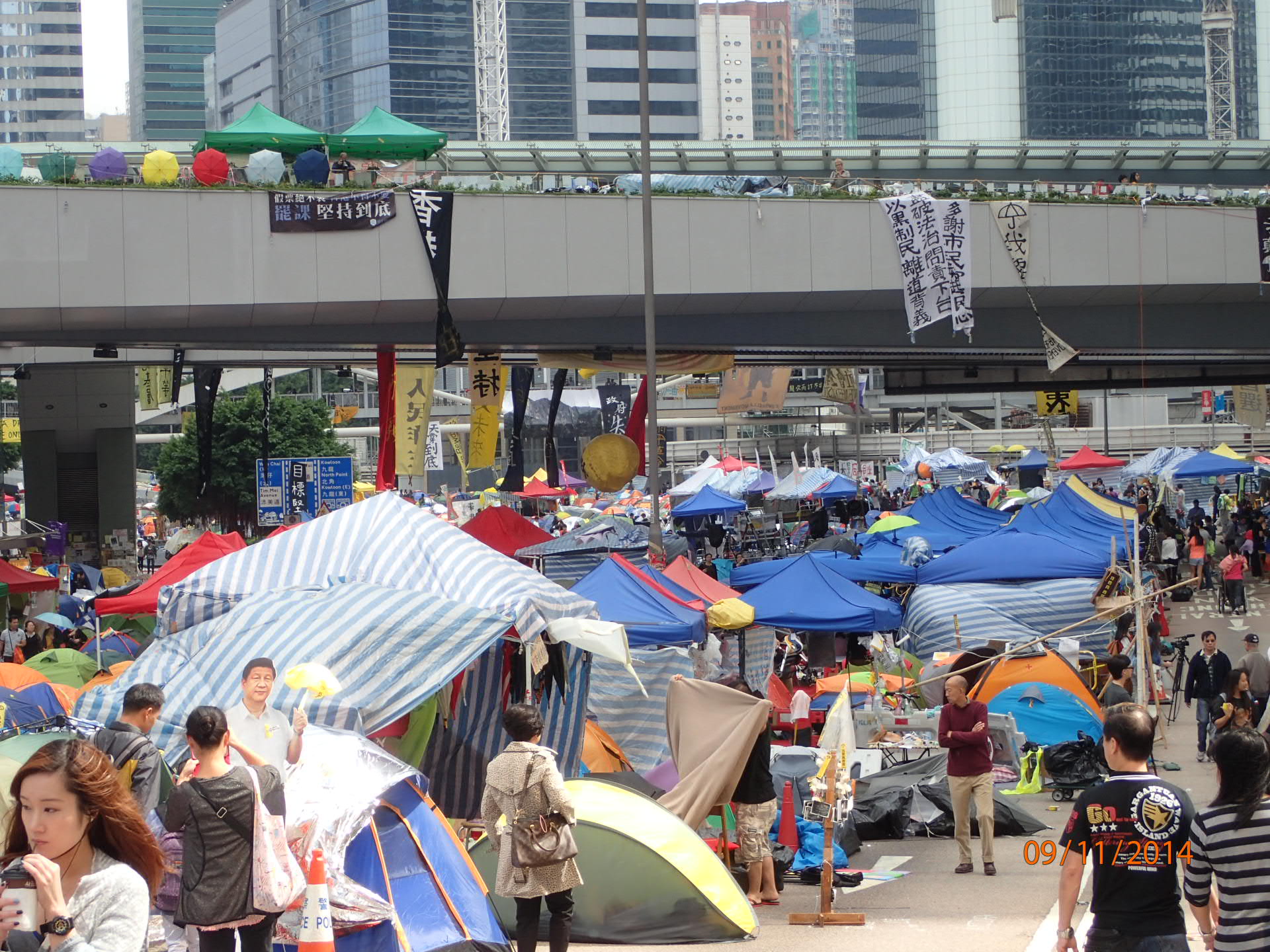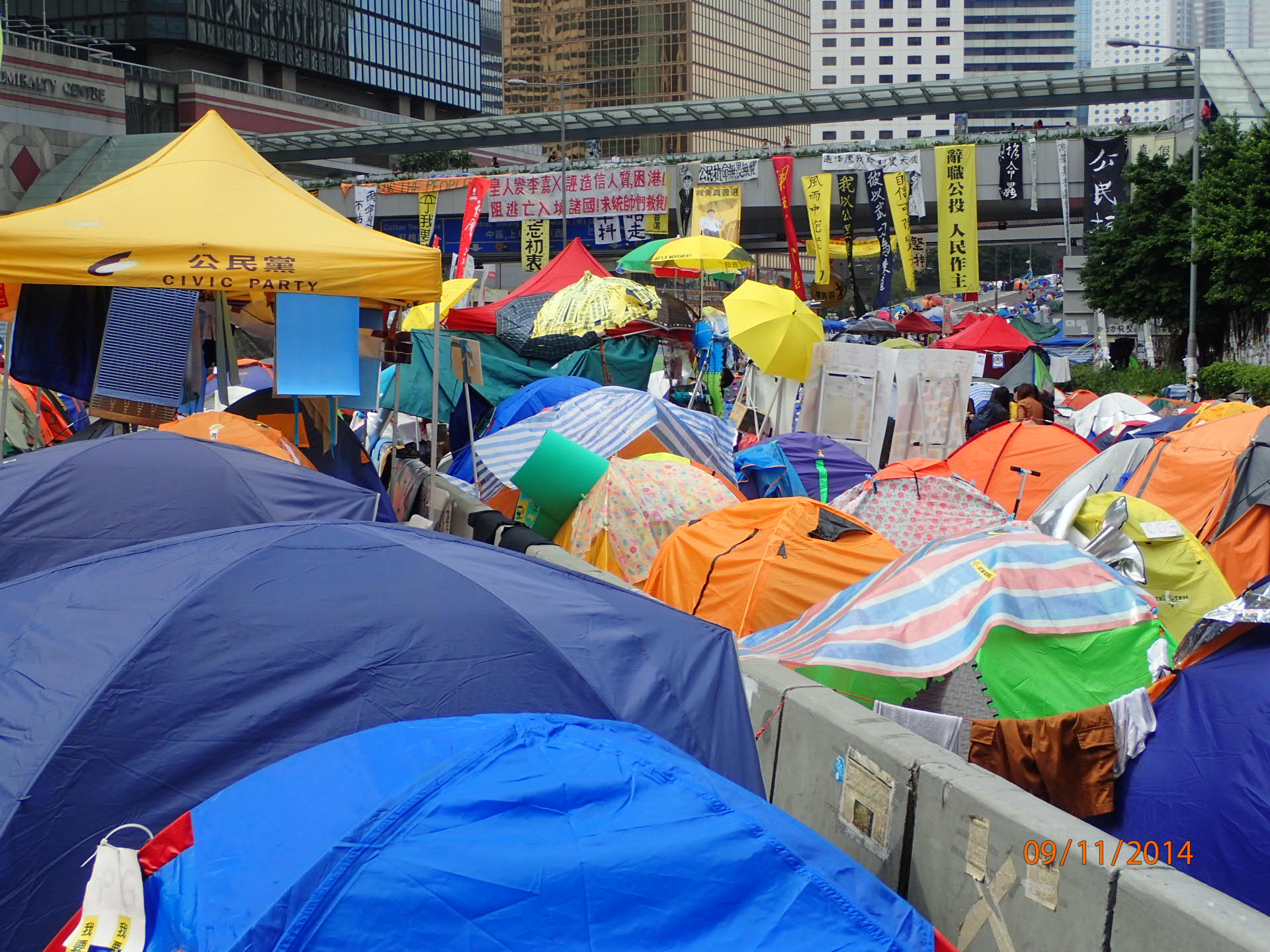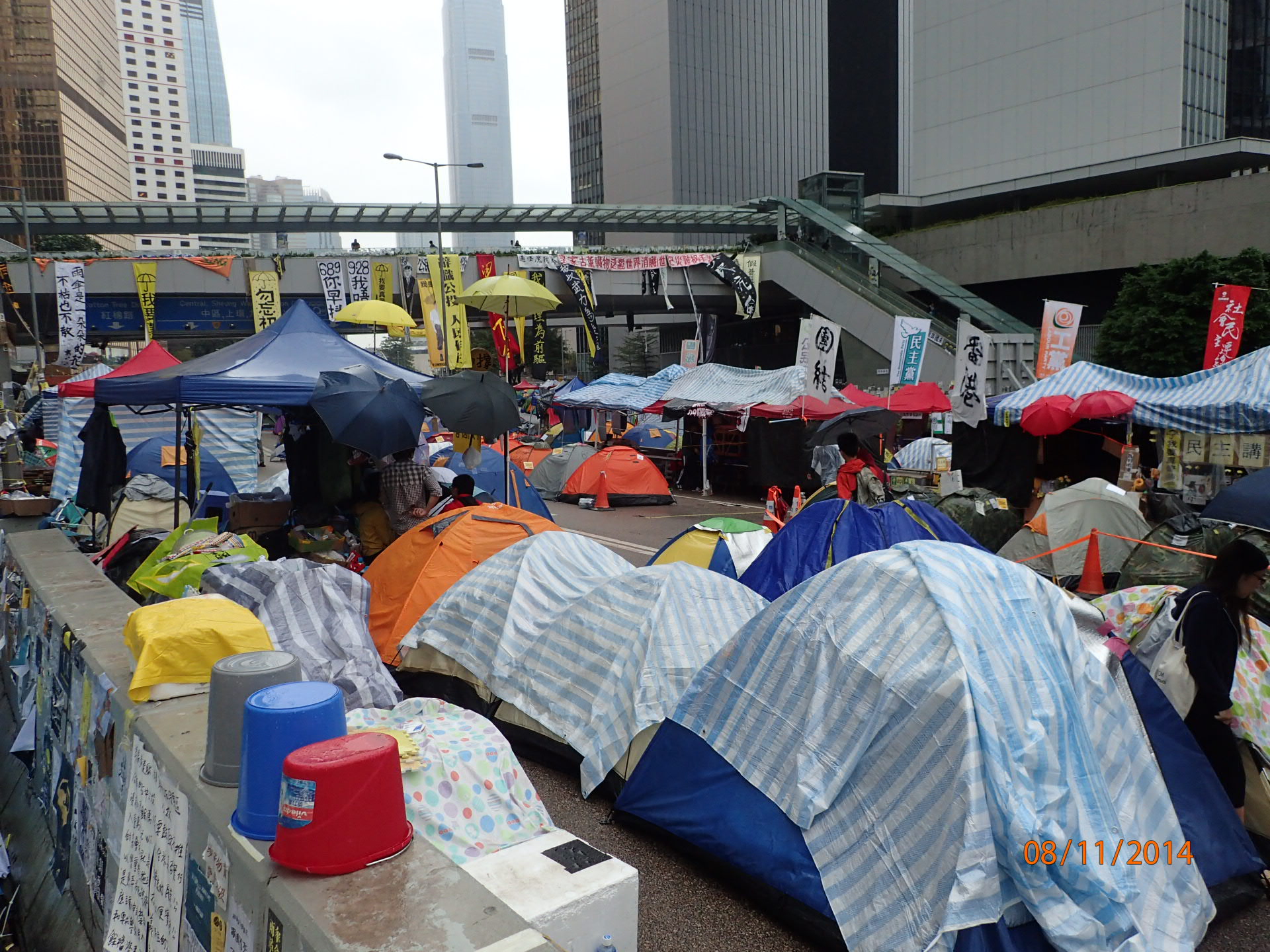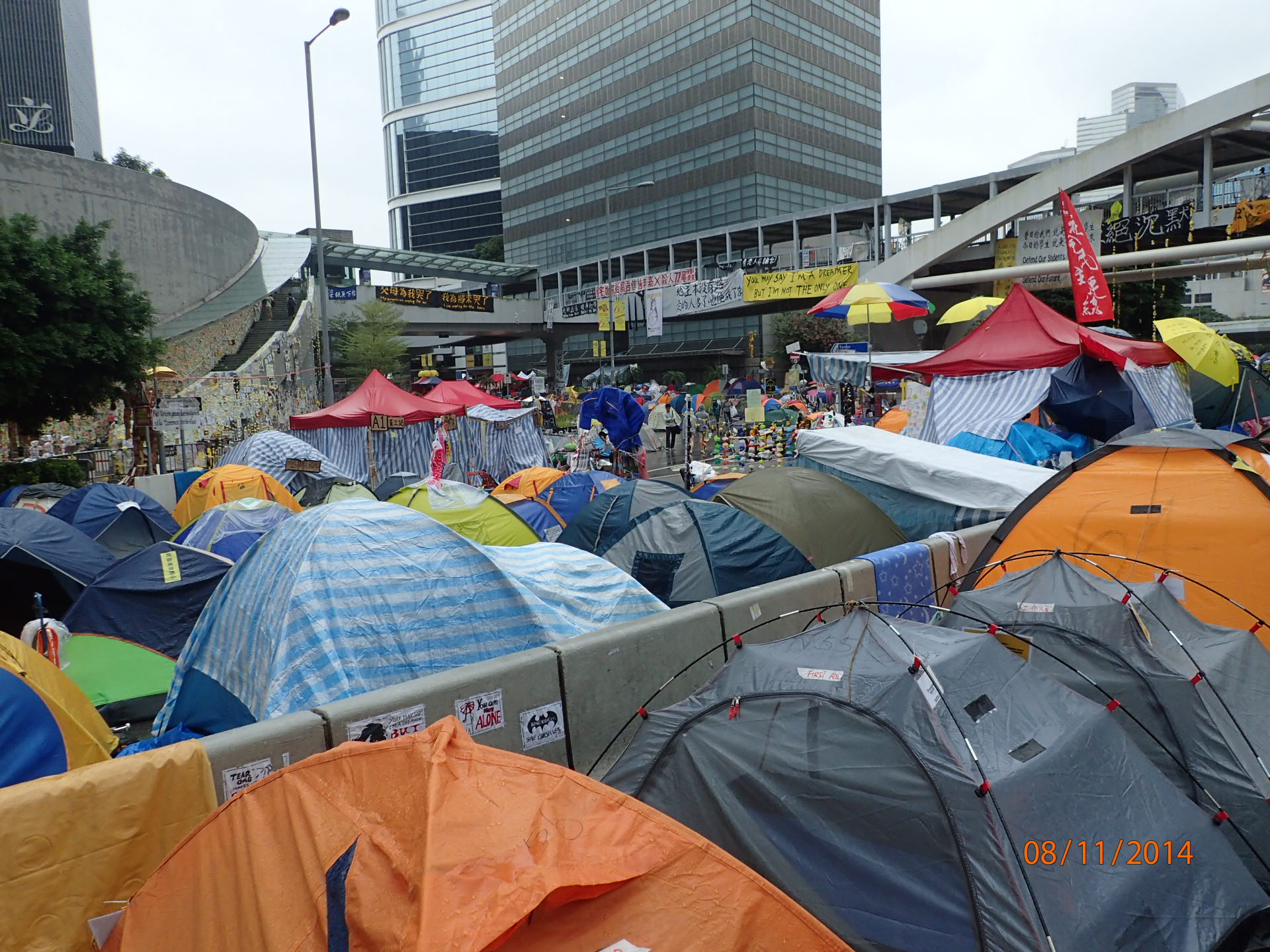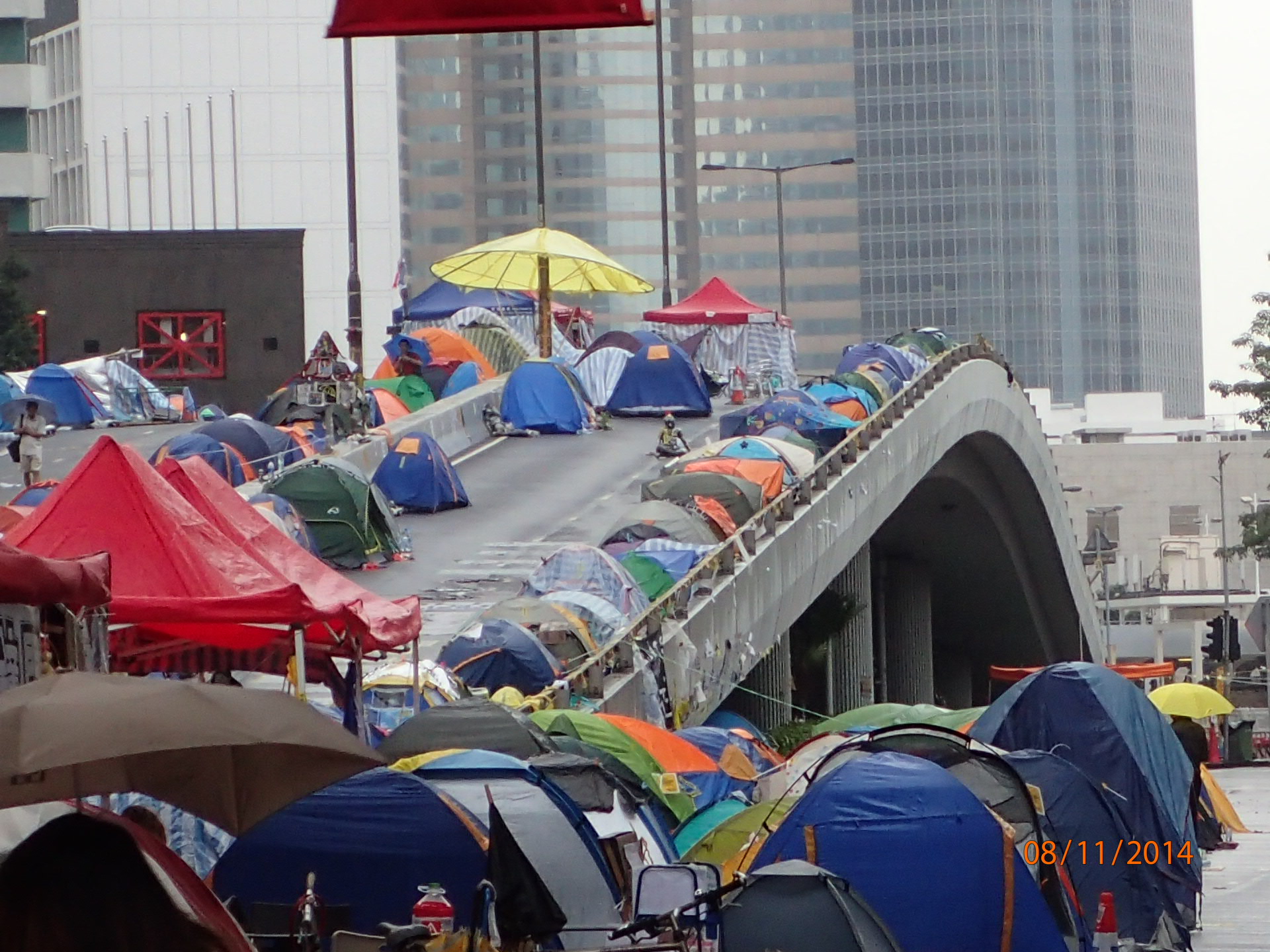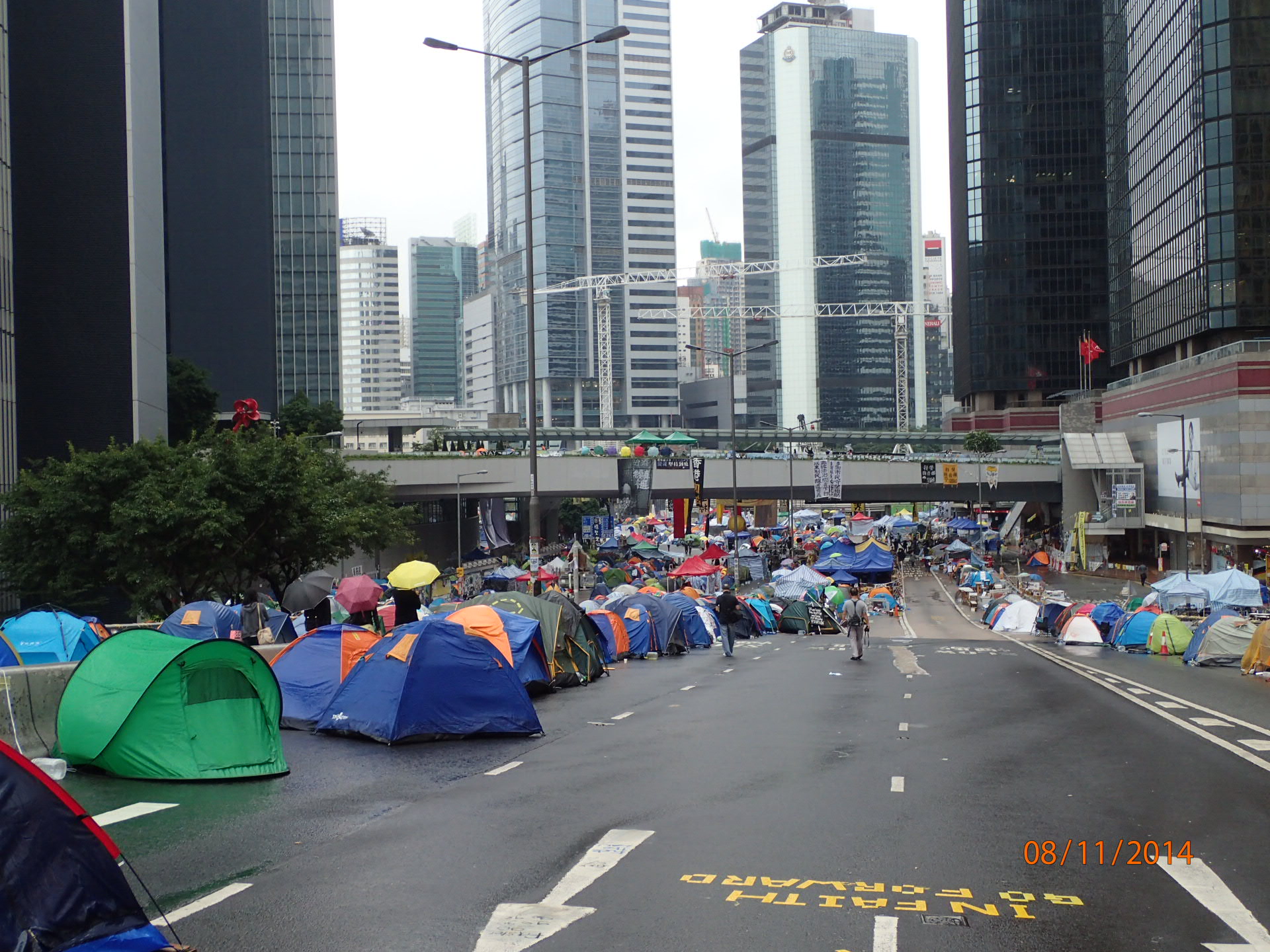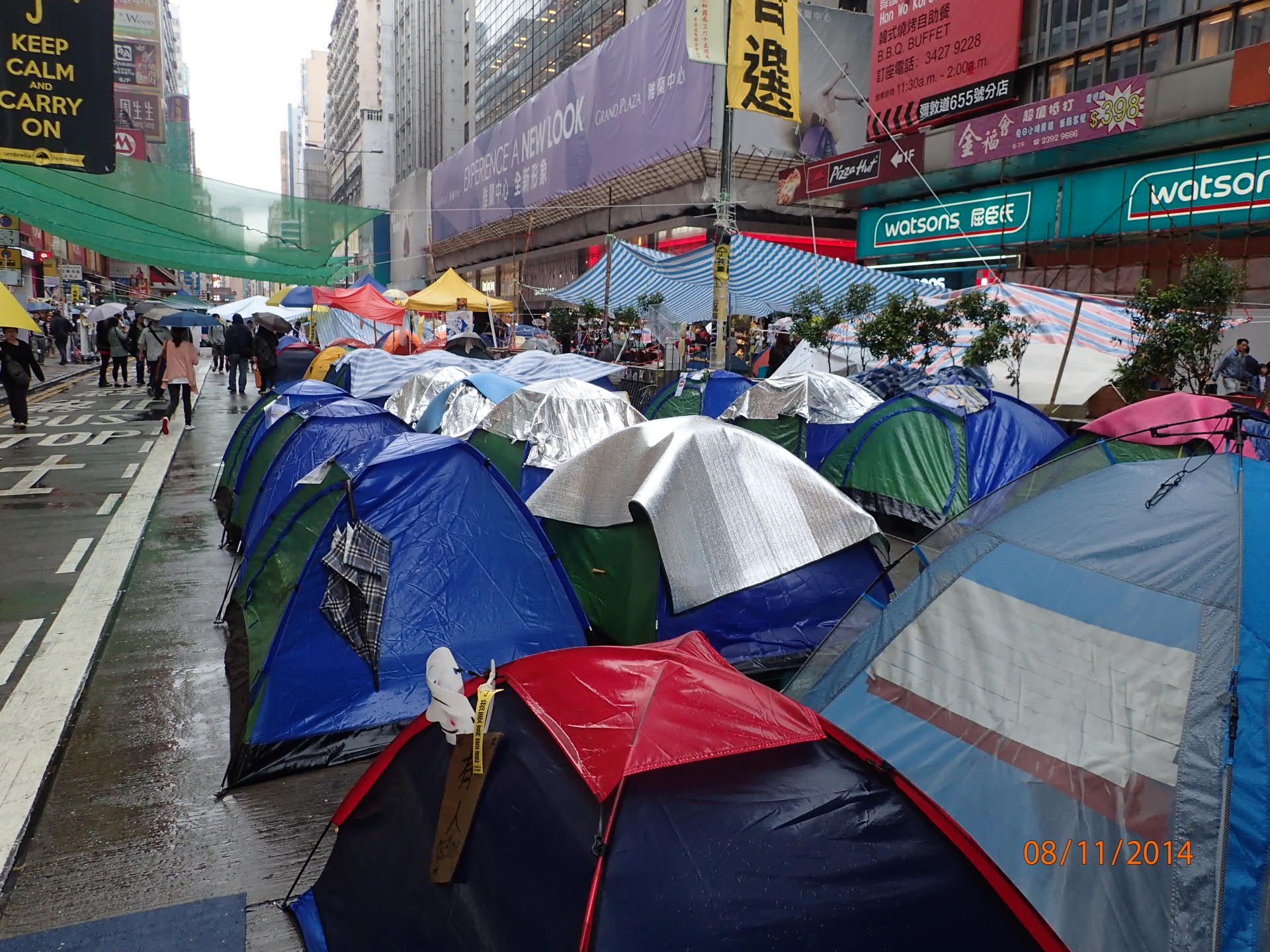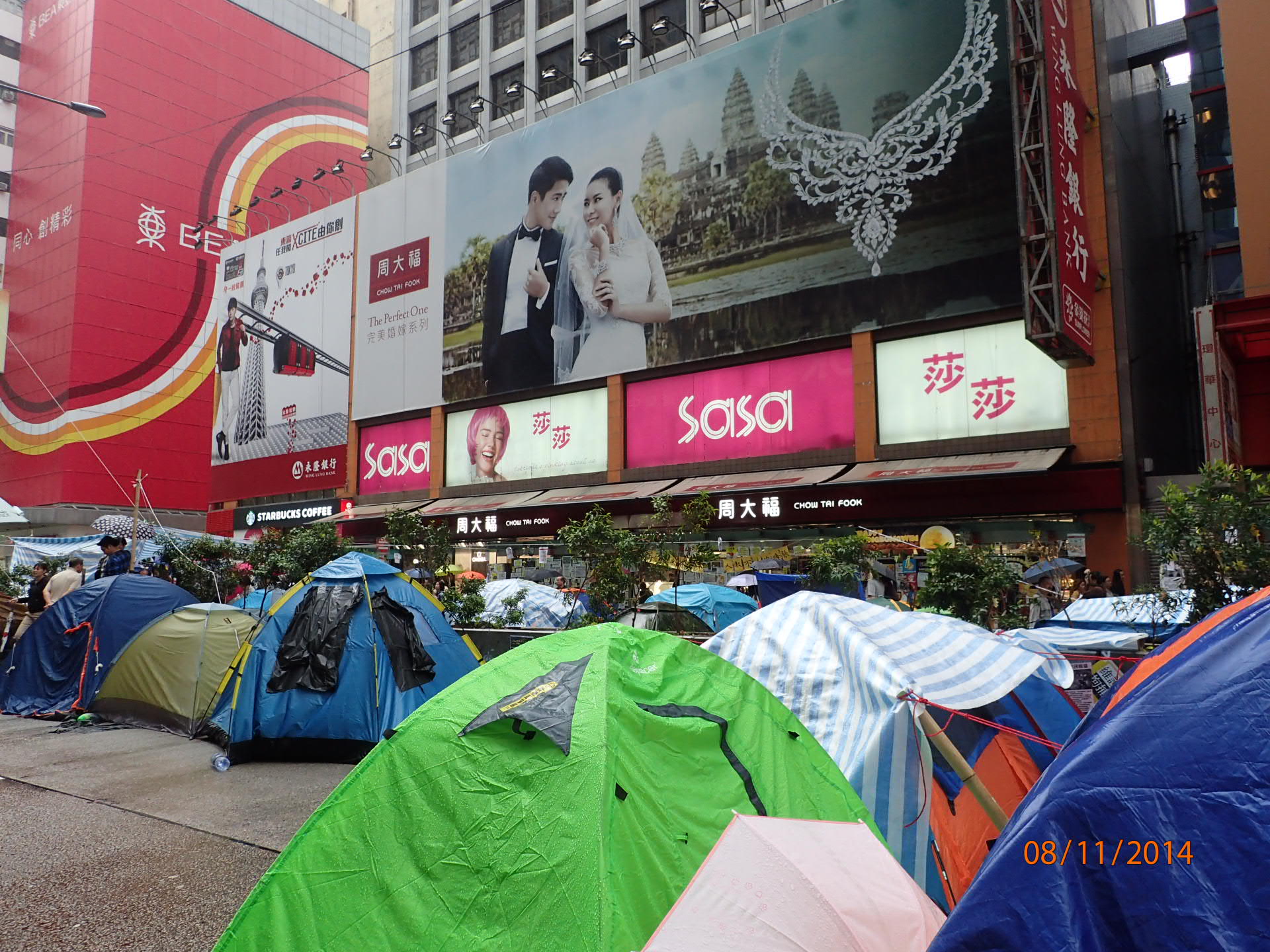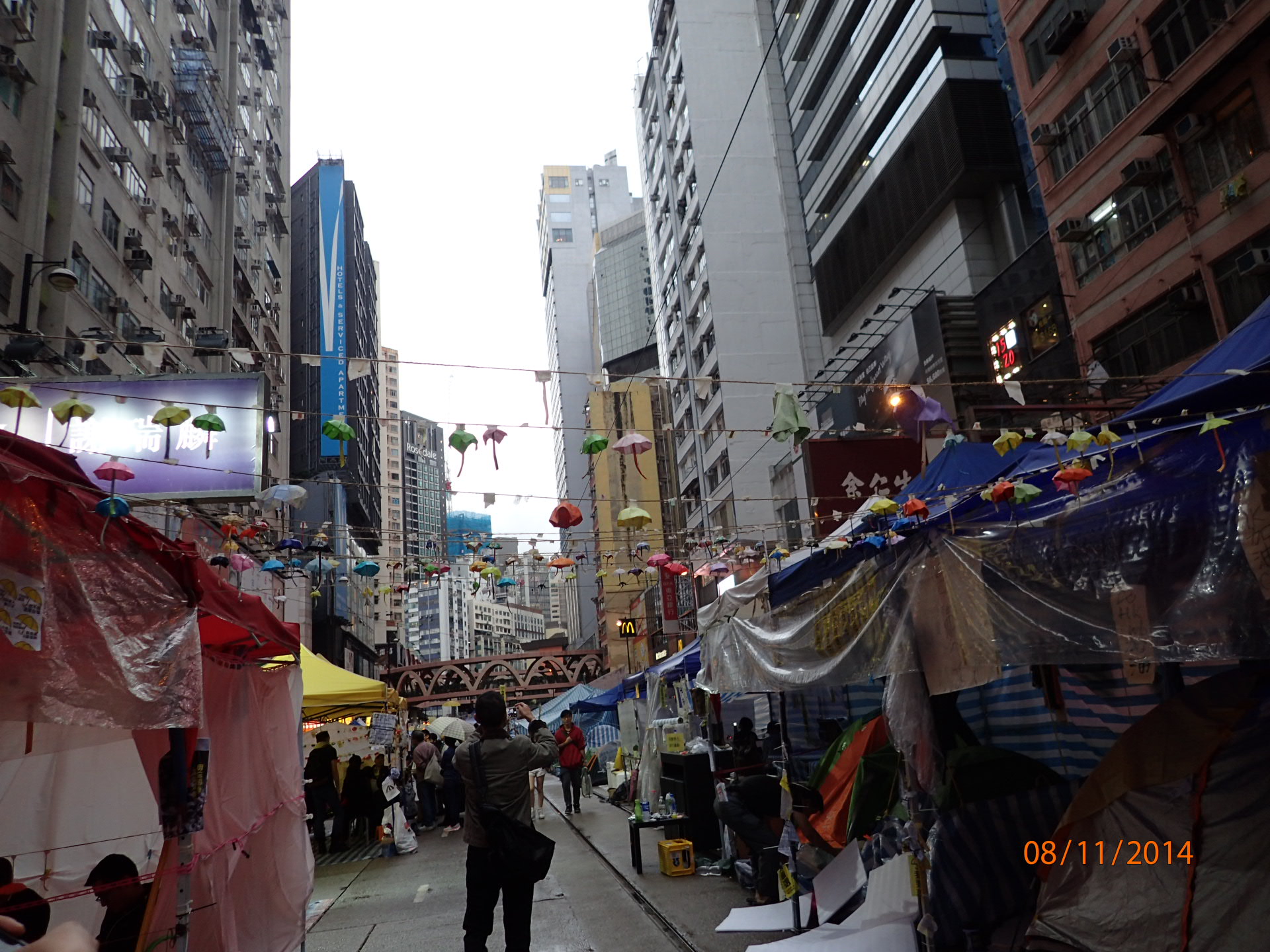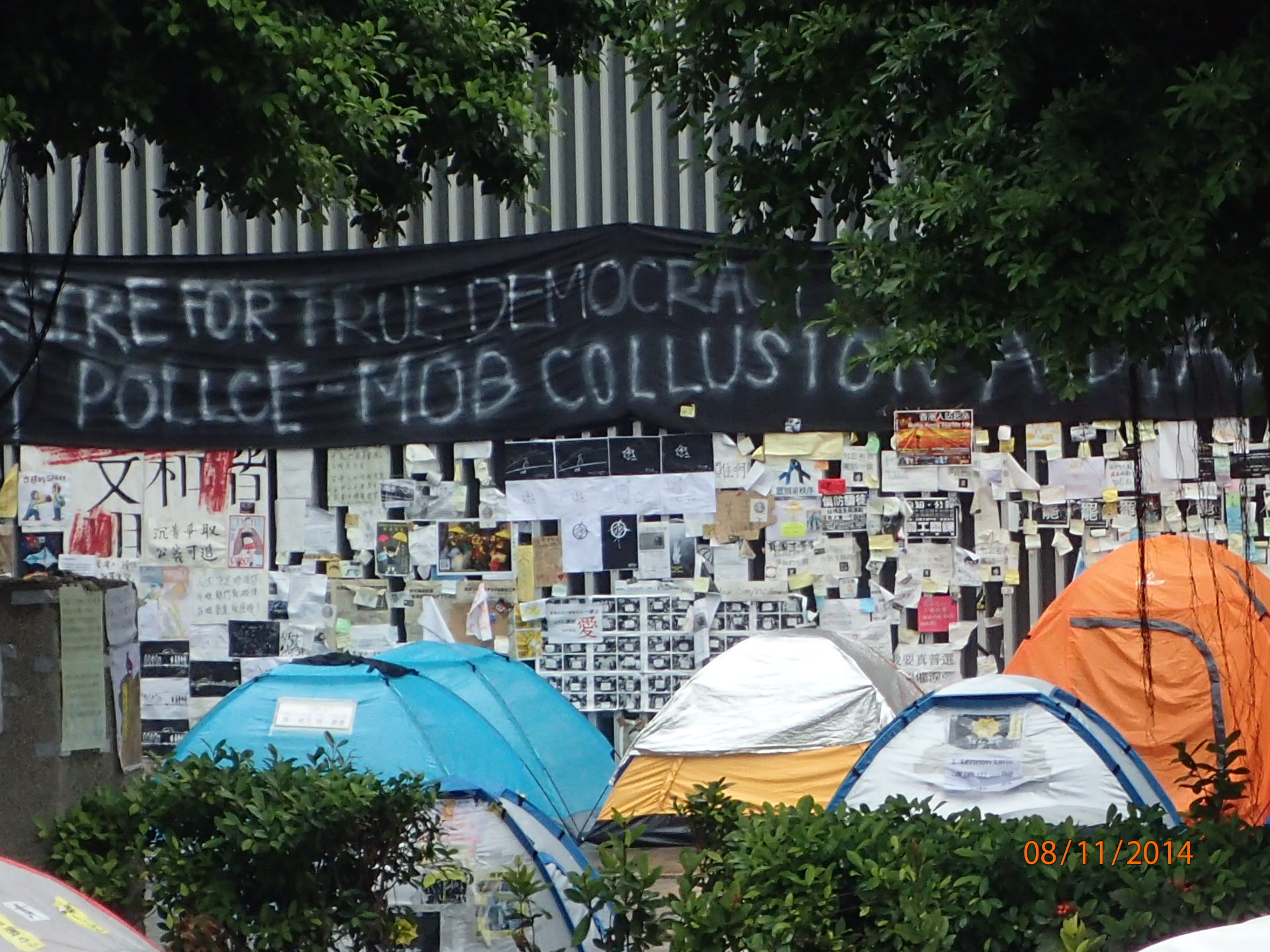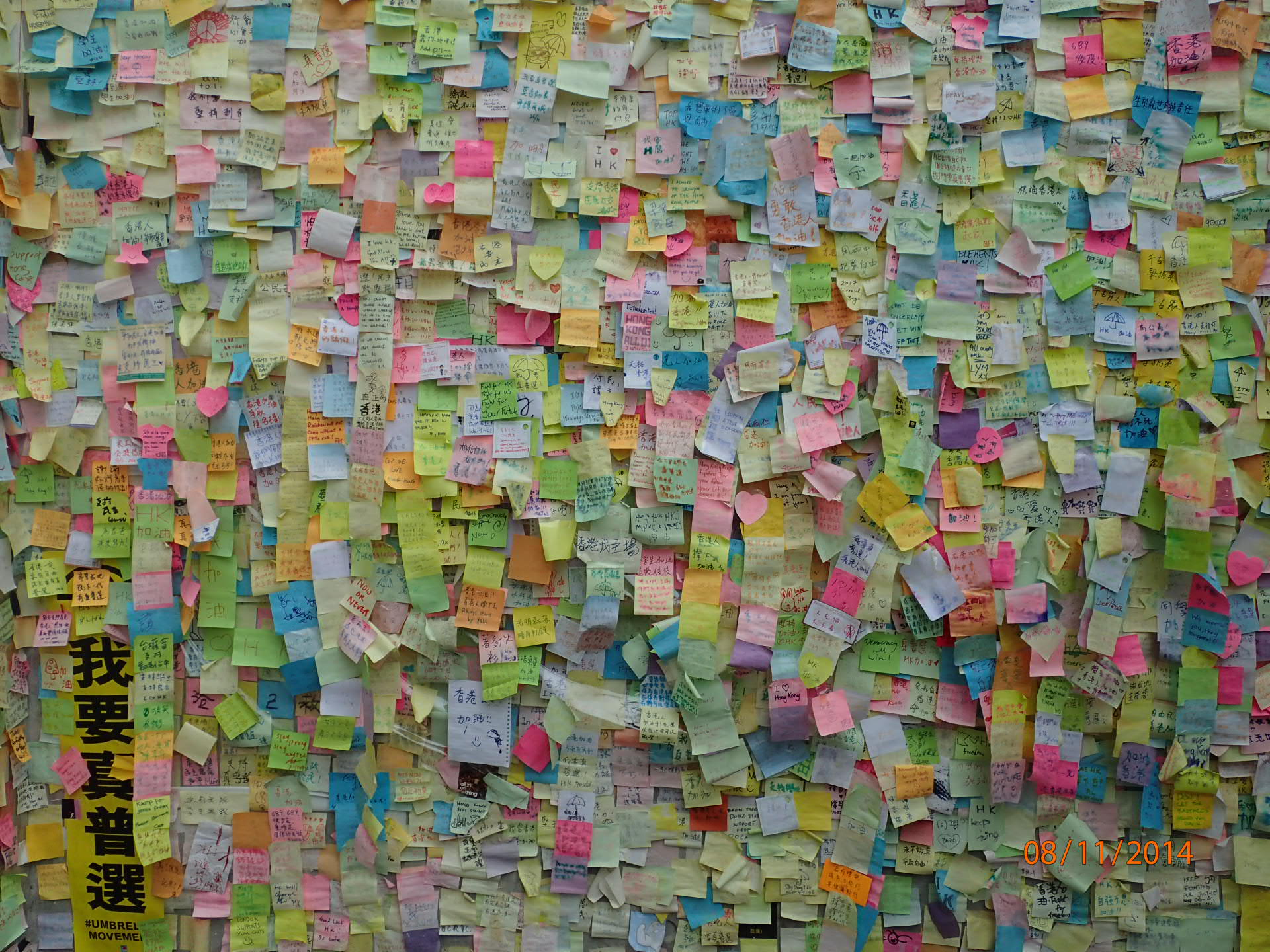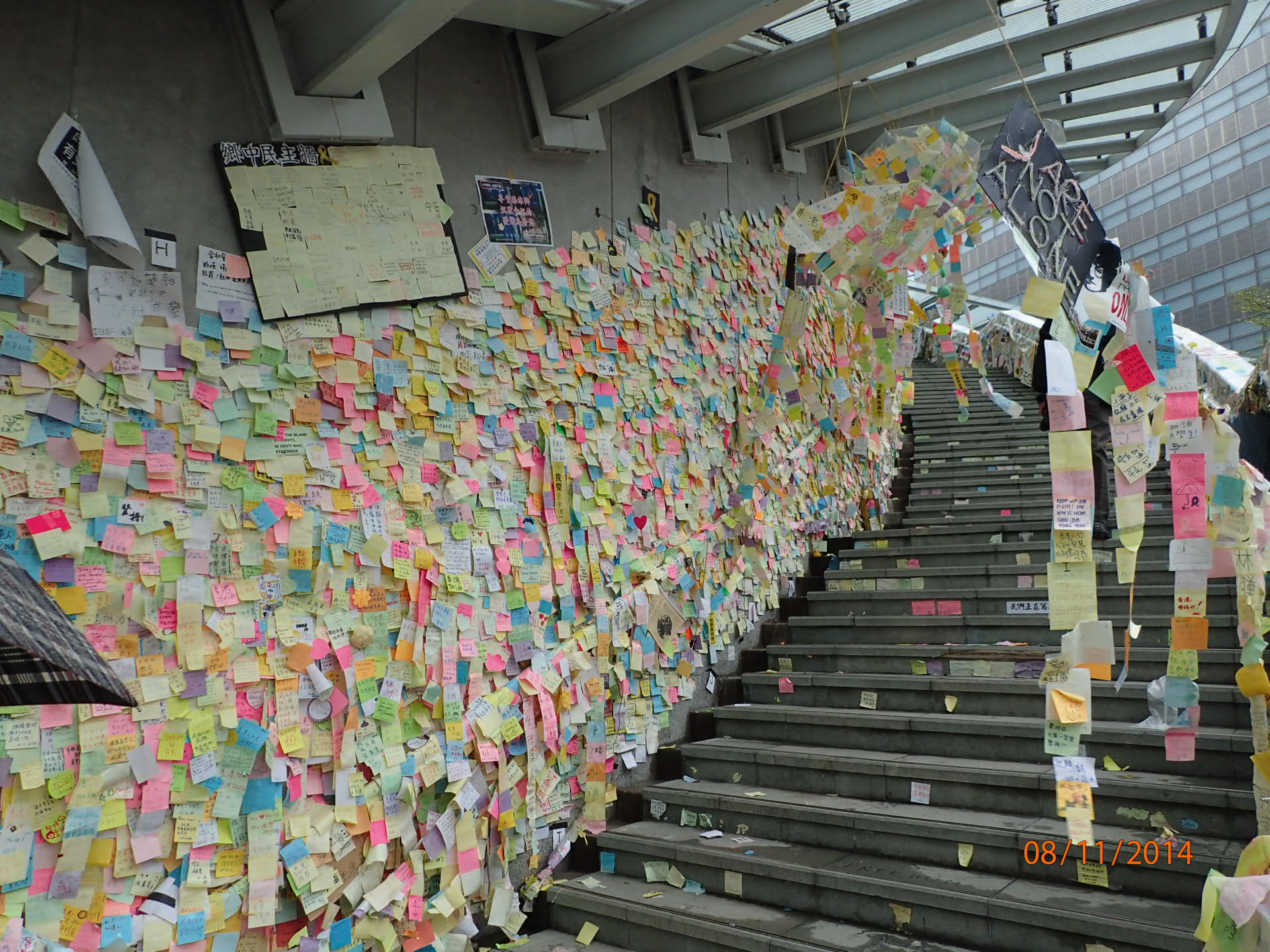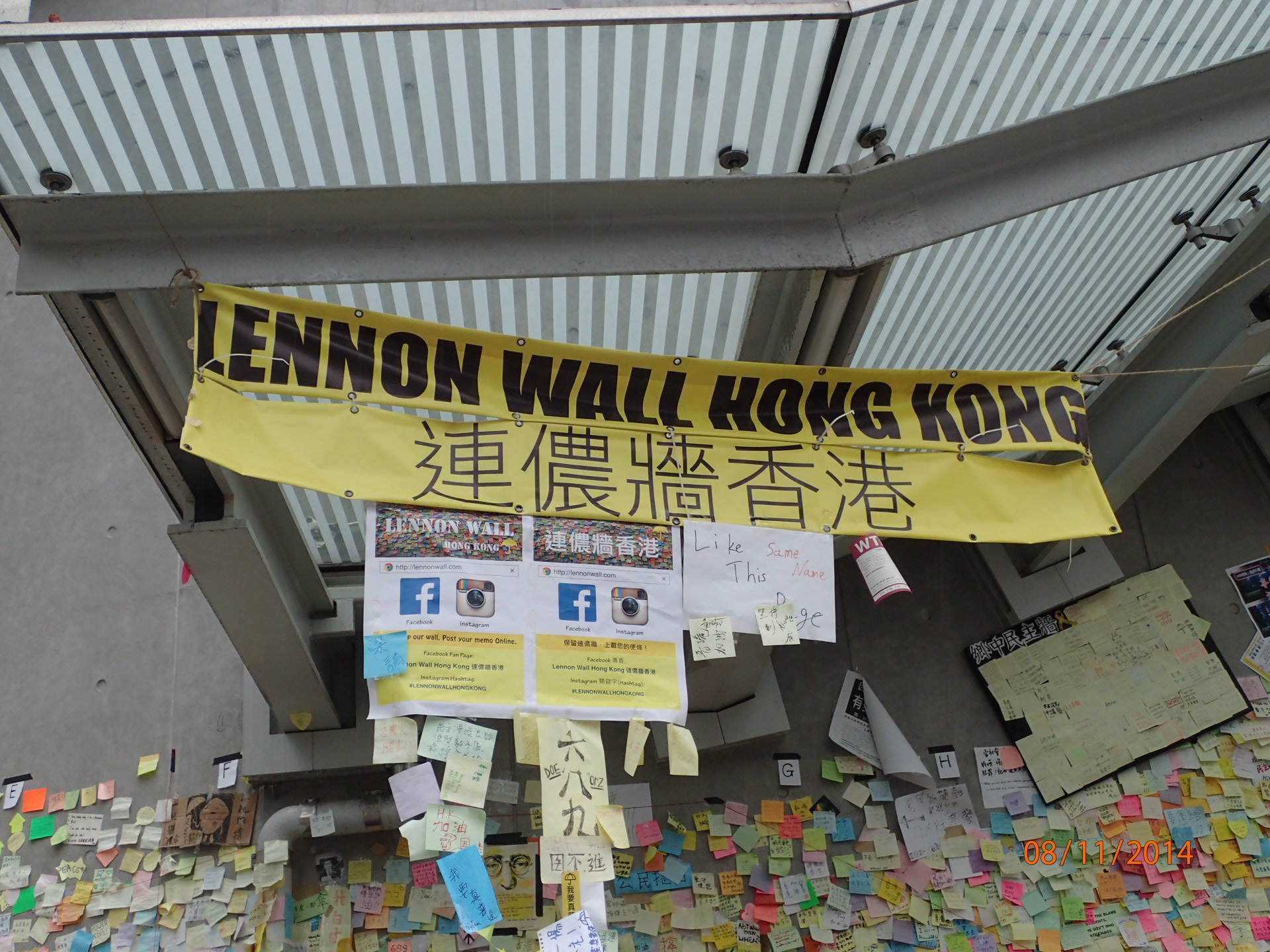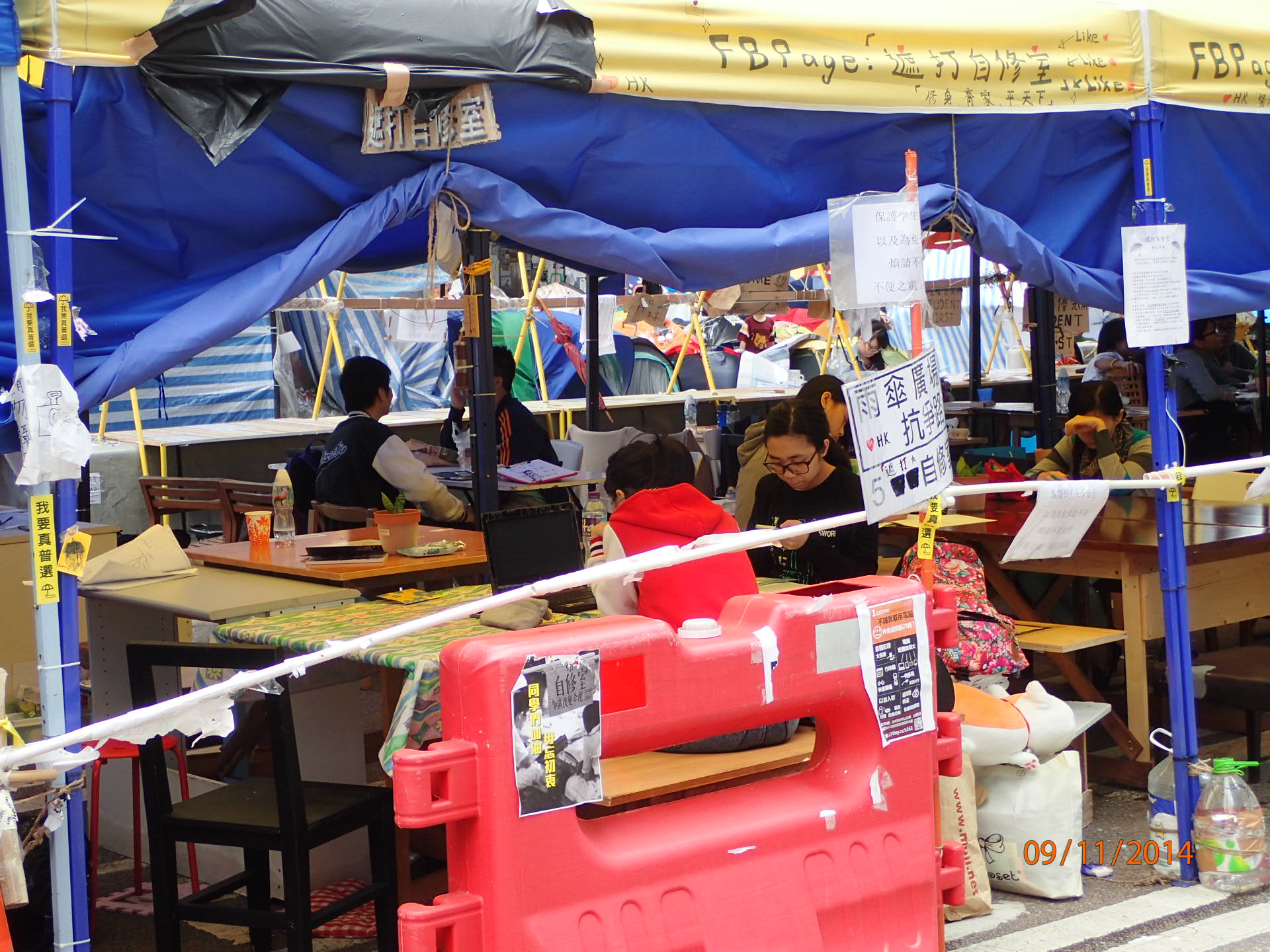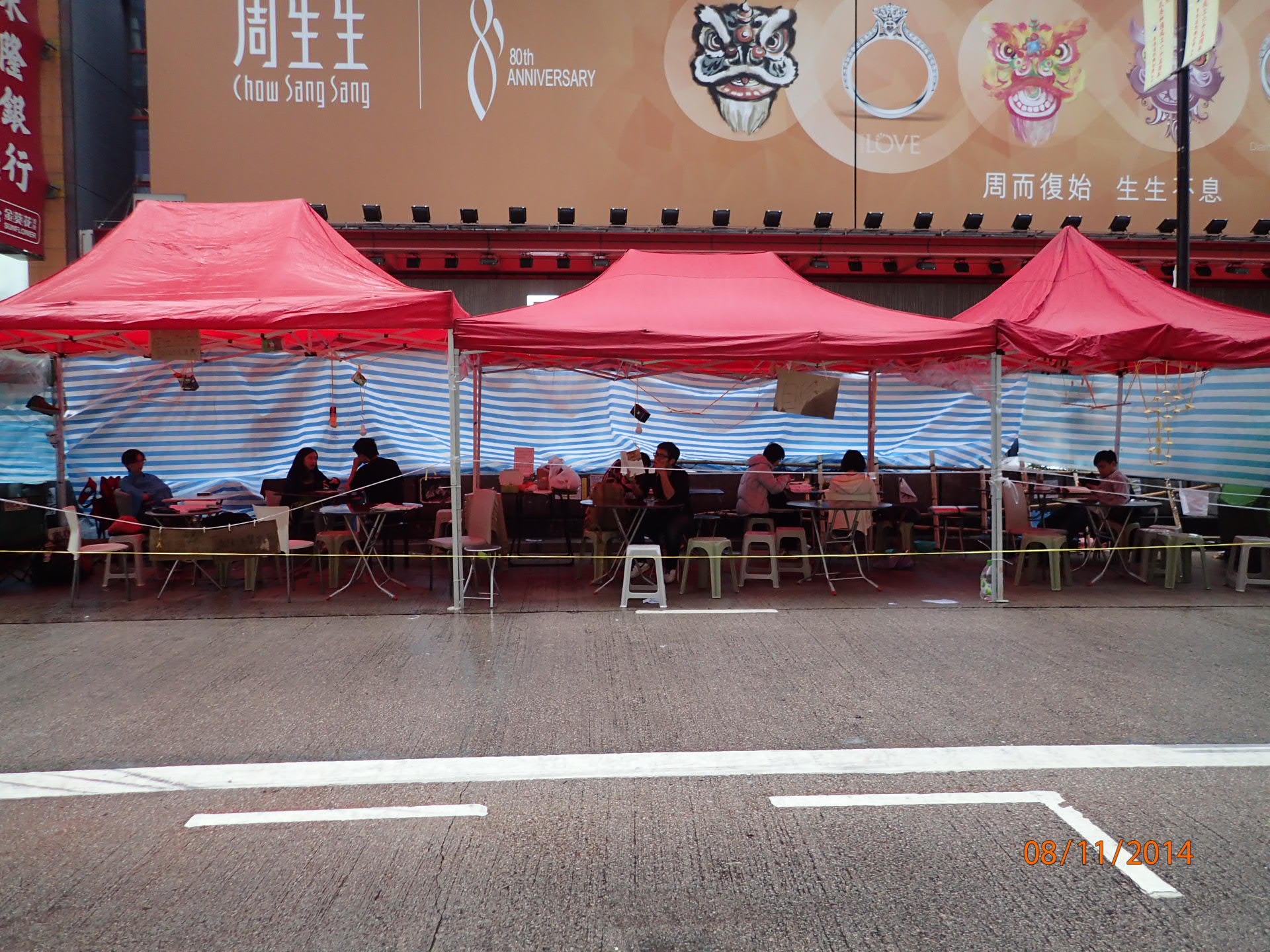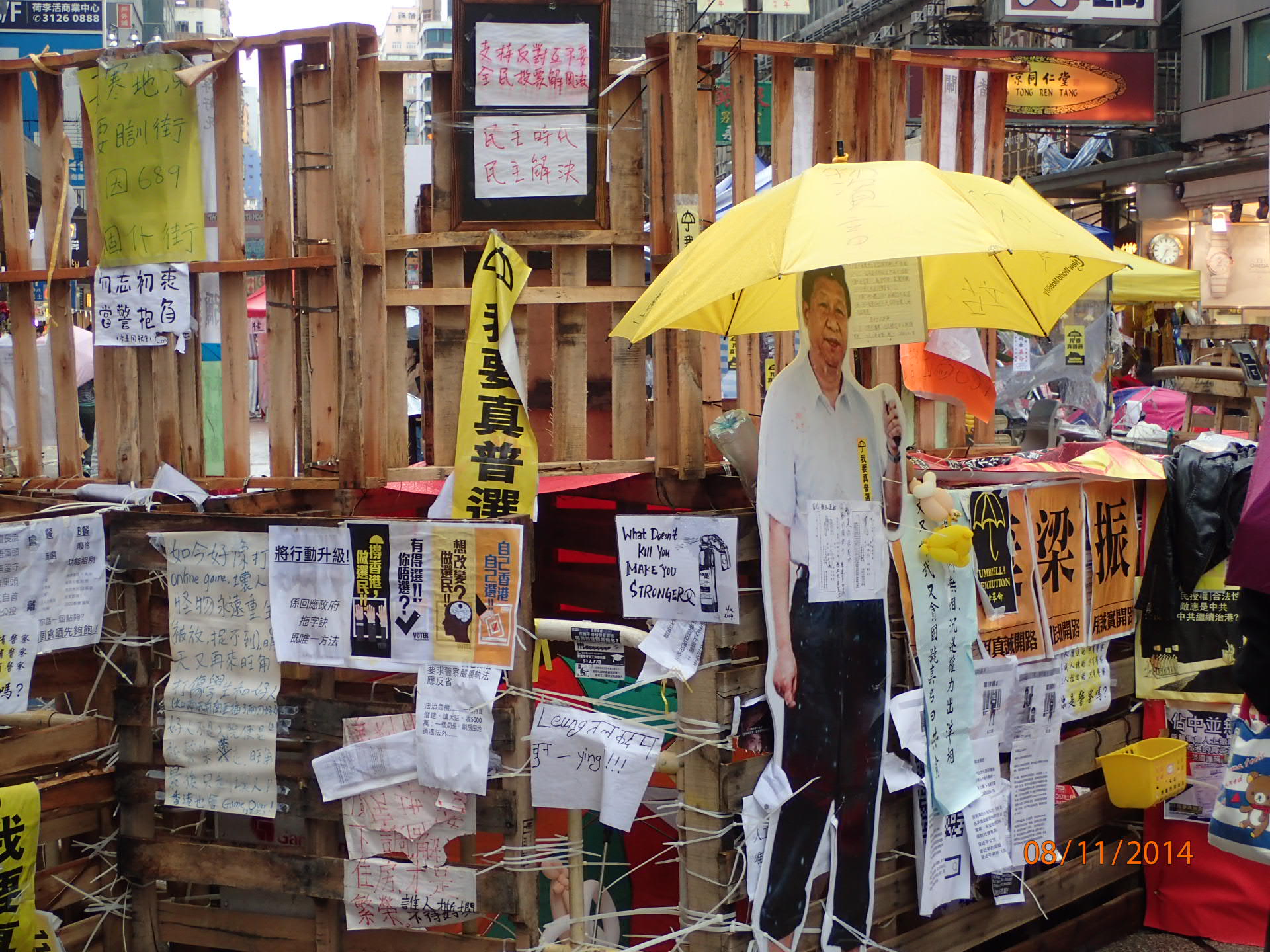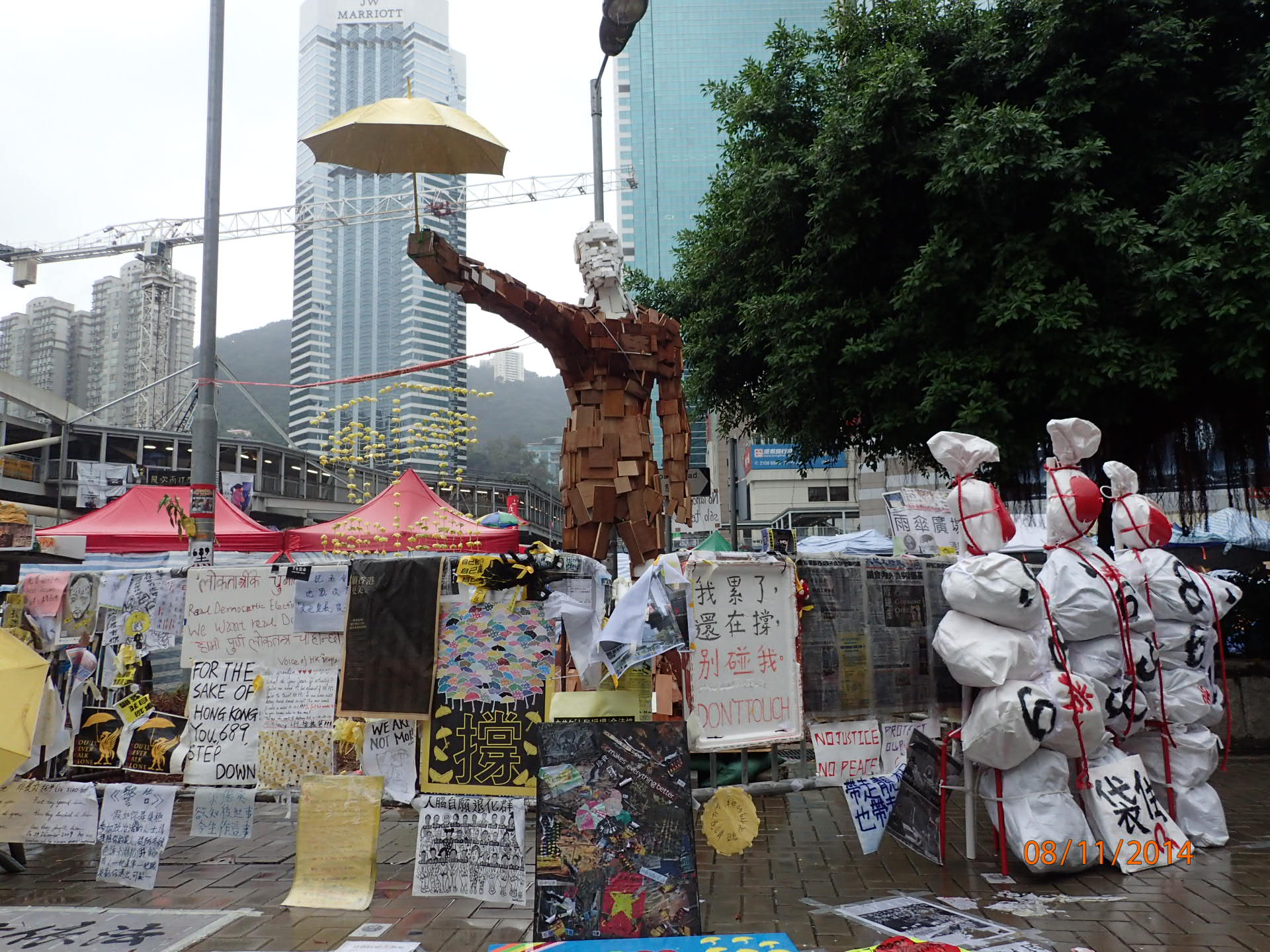I went to Hong Kong last weekend to get a first-hand look at the protests that are now commonly referred to as the “Umbrella Movement”. I went there believing that the protest movement had very little chance of achieving its main objective, which is to gain a ‘free and fair’ election process for Hong Kong, and came away with the same opinion.
The current protests are taking place in three parts of HK — in the streets around the central government offices in Admiralty (near Central on Hong Kong Island), along part of Nathan Road in Mong Kok (a major shopping area on the Kowloon side of HK), and Causeway Bay (a popular shopping/tourist area on Hong Kong Island). Protestors have blocked off some main streets using makeshift barricades and set up camp.
This must be one of the most peaceful mass protests ever. There are thousands of tents on the streets in the protest areas, but apart from numerous signs demanding “civil nomination” for political office and a few people giving speeches to small crowds at night-time, it doesn’t even seem like a protest. Rather, it seems as if a tent-dwelling community decided to make a home in the middle of a bustling metropolis. There are first-aid tents, covered study areas with many desks so that the students participating in the protest can keep up with their schoolwork, food and drink distribution points, and basic toilet/shower facilities. Also, the occupied areas are kept clean and tidy (there is no rubbish lying around). There was a police presence at Mong Kok (a few dozen uniformed police men and women were standing around the outside of the protest area looking bored), but not at Admiralty.
Here are some of the photos I took.
These photos show the tent cities:
These photos show what is now known as “Lennon Wall”. The wall is part of an elevated road in Admiralty and is coated with countless thousands of messages of support.
Finally, these photos show a first-aid tent, two covered study areas, and examples of the protestors’ artwork:
Overall, it appears to be business as usual in HK. Most people are going about their daily lives as if nothing out of the ordinary is going on, and Hong Kong has adjusted to having no vehicular access to the parts of the city occupied by the protestors. However, the situation could turn ugly, as it did for a few days in September, if the government makes another attempt to forcibly remove the protestors.
Although I couldn’t gauge the general level of support for the protest movement within the HK population, I suspect that most HK residents do not want to ‘rock the boat’ for the sake of greater political freedom. Furthermore, there is clearly some animosity towards the protestors on the part of HK people whose businesses have been disrupted by having some main streets blocked off. In one case, this animosity took the form of a high-volume tirade from a taxi driver when he was asked by my wife for his opinion about the protests.
Hong Kong’s rapidly-rising cost of living is one of the root causes of the discontent that led to the mass protests, but this problem would almost certainly not be addressed by ‘the people’ gaining more influence over who occupies the top political offices. The reason is that hardly anyone involved in the protest movement understands that the high cost of living is due to HK being crushed between the inflationary policies of the US and China.
Thanks to the HK dollar’s peg to the US dollar, HK’s monetary authority essentially follows the US Federal Reserve. This means that despite the steep upward trend in HK prices, interest rates are still being held near zero and the money supply is still being inflated at a brisk pace (it is up by 15% over the past 12 months). At the same time, as a result of the appreciation of the Yuan relative to the US$ and the large price rises in China’s major cities courtesy of rampant monetary inflation in that country, prices in HK still appear reasonable to the mainland Chinese who continue to flood into HK to spend money.
Hong Kong’s “inflation” problem looks destined to get worse over the coming 12 months, which could lead to more widespread support for the “Umbrella Movement”. But in the absence of a general understanding of the nature of the problem, taking a step in the direction of democracy is not going to help.
 Print This Post
Print This Post

